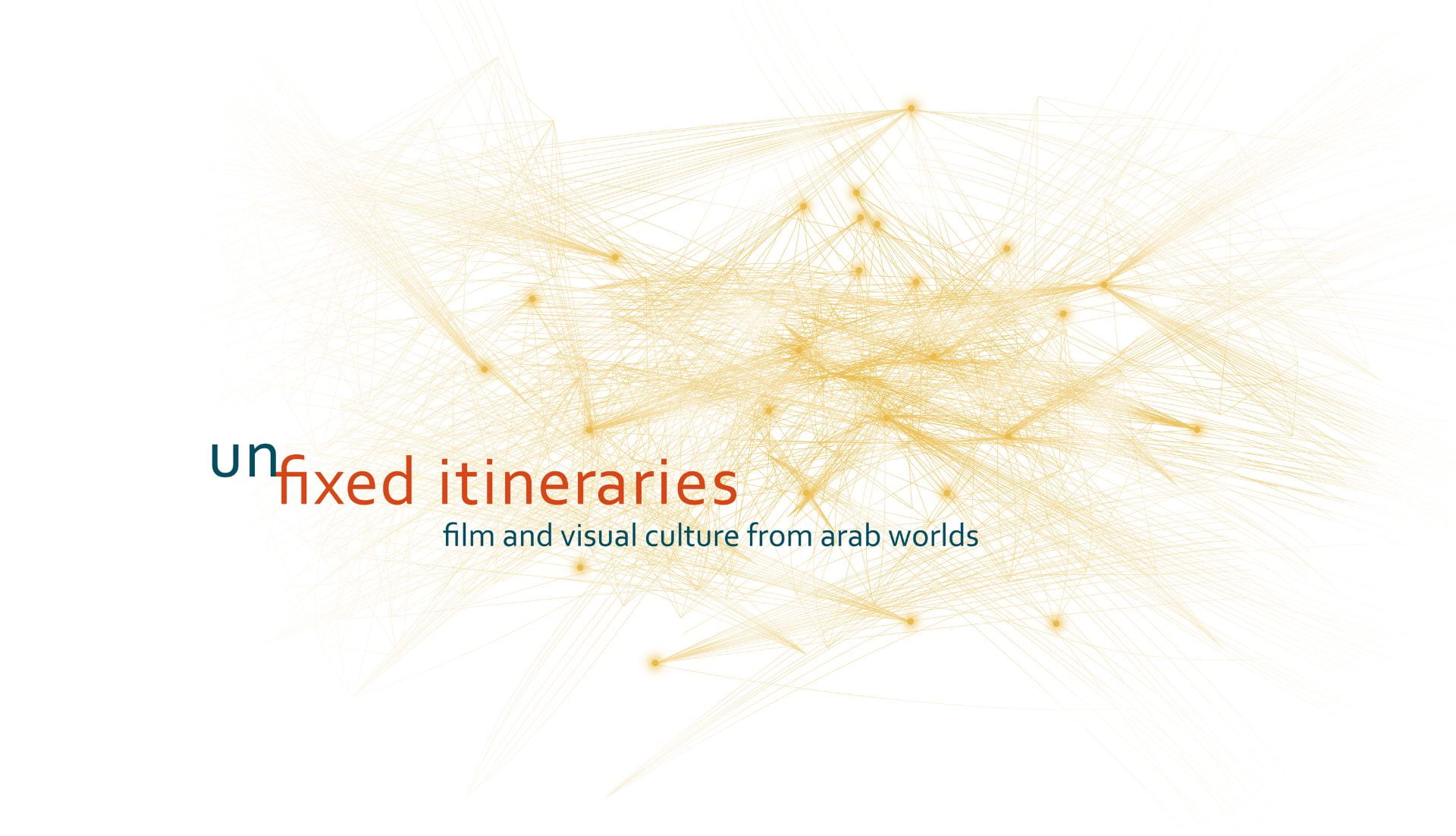 Unfixed Itineraries was a two-day symposium of scholars and artists that took place October 25-26, 2013 at the University of California, Santa Cruz. I co-organized the event with Professor Omnia El Shakry (UC Davis).
Unfixed Itineraries was a two-day symposium of scholars and artists that took place October 25-26, 2013 at the University of California, Santa Cruz. I co-organized the event with Professor Omnia El Shakry (UC Davis).
This symposium on Arab film and visual culture was conceived to emphasize the plurality of Arab visual culture, the complex itineraries by which it is produced, and the multiple trajectories through which it can be experienced. Artists and scholars were present from Lebanon, Morocco, Egypt, Syria, Europe and the US. Work presented covered a wide area of forms, styles and thematic concerns. The symposium featured participation and creative work by:
Livia Alexander • Michael Allan • Ahmed Bouanani • Dore Bowen • Ali Cherri • Kay Dickinson • Tarek El-Ariss • Nouri Gana • John Greyson • Lamia Joreige • Hassan Khan • Marie El Khazen • Sunaina Maira • Nabil Maleh • Susette Min • Stefania Pandolfo • Larissa Sansour • Zineb Sedira • Jeffrey Skoller
With special guest: Moumen Smihi
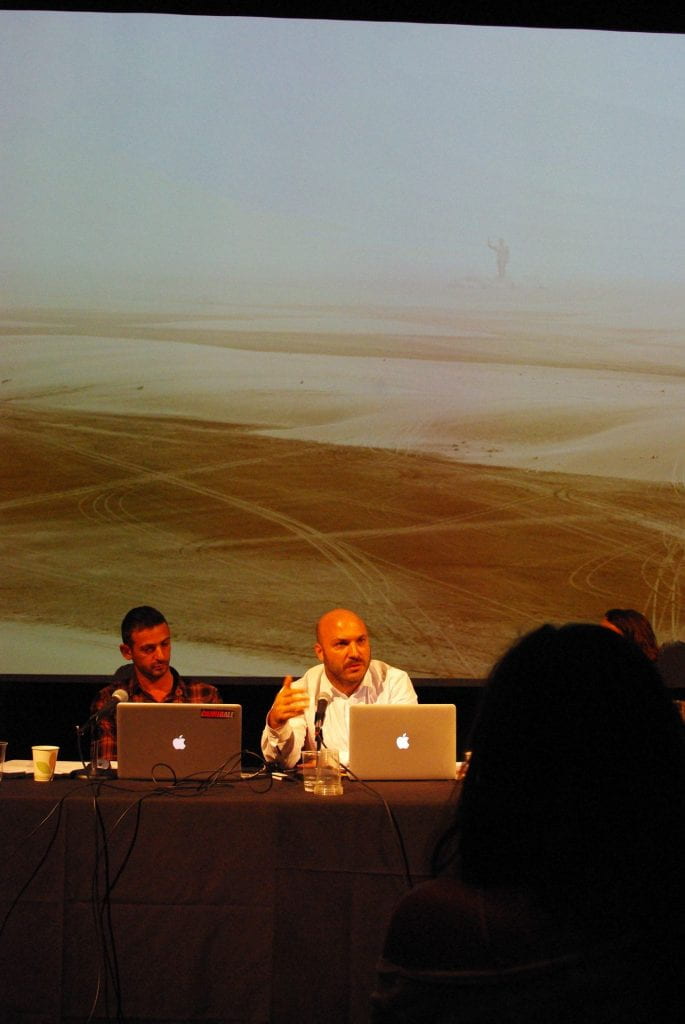
Symposium screenings, panels and presentations were organized around the themes of: Movement and Extra-territoriality; Itineraries of Intertextuality; Past, Present and Future Itineraries; Narrative and non-Narrative Itineraries; Archives, Images, Memory.
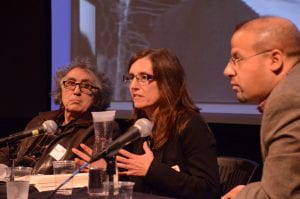
The event also featured an exhibition of visual art at UCSC’s Sesnon Gallery, curated by Peter Limbrick and Shelby Graham. That exhibition comprised video installations by Hassan Khan (“Tabla Dub #9,” 2002), Zenib Sedira (“Saphir”, 2006) and photographs by Maria El Khazen from the collection of the Arab Image Foundation, Beirut.
Global Islam: A Weekend of Film and Video
In 2015, as co-director of the Center for Emerging Worlds for that year, I programmed all but one session of this special event for the center to close a year of programming under the theme of Global Islam. Kuwaiti video artist Monira al-Qadiri visited UCSC for the event and, as well as holding a master class for graduate students, took part in onstage conversations with us. My colleague Jennifer Maytorena Taylor discussed her award-winning film New Muslim Cool. While Mounir Fatmi was not able to attend, we did get to screen HD versions of his video work and I held a conversation about it via Skype with Professor Tarek Elhaik of UC Davis. Rabah Ameur-Zaïmeche’s work was the focus of a discussion on France and Islam with Professor Mayanthi Fernando (co-director of the center) and Prof. Fernando also talked with director Christian Suhr via Skype.
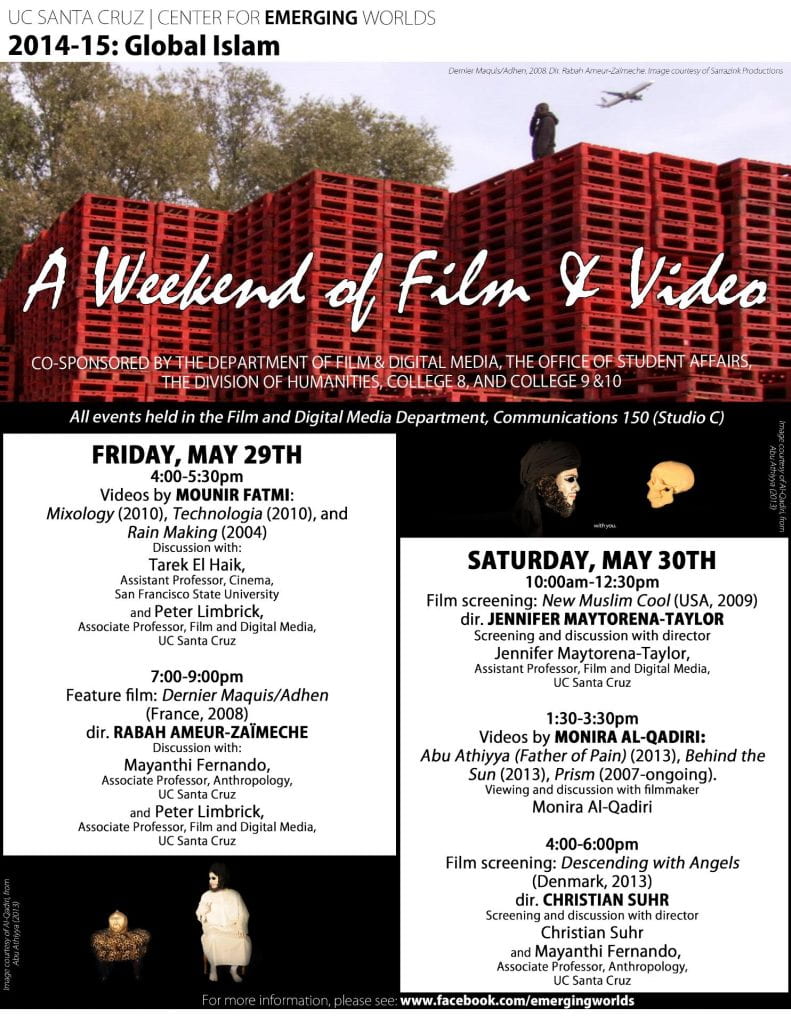 Full schedule with program notes
Full schedule with program notes
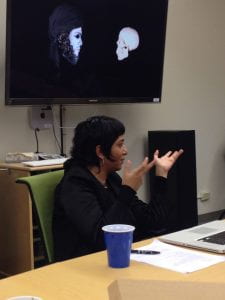
Return screenings of The Seekers, New Zealand, 2008.
In 2008, I worked in close collaboration with the Ngā Taonga Sound and Vision (known at the time as Ngā Kaitiaki o Ngā Taonga Whitiāhua/The New Zealand Film Archive) to organize screenings of the 1954 film The Seekers (US title: Land of Fury), directed by Ken Annakin for J. Arthur Rank in the UK. The film is set in Aotearoa/New Zealand in the 1820s, during the early colonial period, and most of it was shot on a set at Pinewood Studios, in England, with many Māori actors including opera star Inia Te Wiata. A production unit visited New Zealand from December 1953 to March 1954 to do location shooting for several scenes in the movie, mostly in the Whakatāne and Rotorua areas, and many local people took part. During research for my first book, Making Settler Cinemas, I met many of the people involved in that location shooting, most of whom had never seen the finished film. Our project brought the film back for screenings on the marae at Wairaka, the home of the Ngāti Hokopū hapū, the marae at Tapuaeharuru, home of the Ngāti Pikiao, and in commercial theaters in Whakatāne and Rotorua. The screenings were modeled on the project Te Hokinga Mai which re-establishes connections between films held in the Ngā Taonga Sound and Visions archives and the iwi or hapū groups who are represented in them. The screenings are described extensively in chapter five of Making Settler Cinemas. Information on Ngā Taonga Sound and Vision’s relationships with iwi and hapū are described on their website.
